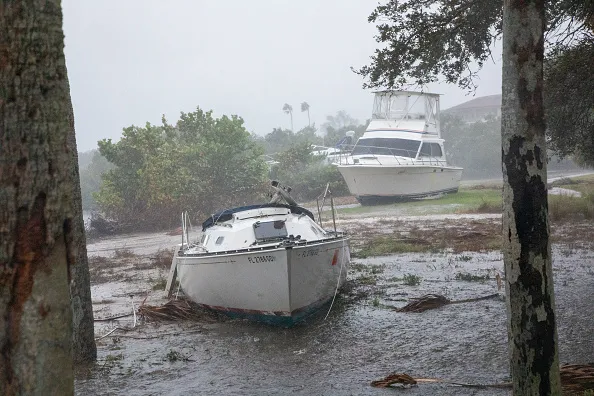Hurricane Milton: Global insurance industry bracing for colossal losses

As Hurricane Milton, a category three storm rips through the central west coast of Florida, the global insurance industry is bracing for losses of up to $100bn (£76bn).
The hurricane made landfall in the State in the early hours of the morning, with winds reaching 110mph within 90 minutes.
The US National Weather Service has issued the highest level of flood warning to more than two million residents within Milton’s path.
Analysis at Morningstar DBRS predicted if Hurricane Milton makes direct landfall in Tampa, the loss will be between $60bn to $100bn range, potentially making Hurricane Milton’s insured losses on par with those of Hurricane Katrina.
While noting that expected losses with an entry point south of Tampa Bay, but far from Fort Myers, to be in the $30bn to $60bn range.

The analysis stated that “regardless of the magnitude of the damage inflicted by Hurricane Milton, the accumulation of insured losses during the 2024 hurricane season, which still has approximately two more months to go, will likely make a dent in insurers’ profitability, particularly to those with significant exposures to personal lines in Florida.”
This is the second hurricane Floridians have faced in the last month, after Hurricane Helene caused widespread destruction across the Southeastern US, including in Florida in September.
London-listed insurers already saw their shares drop on Monday in the lead up to the hurricane hitting the shores, as shares in Hiscox closed 2.6 per cent lower and Beazley fell 2.4 per cent on Monday morning.

London’s insurance market plays a crucial role in insuring against the risks associated with hurricanes, particularly in the US.
Speaking to City AM in August, Sheila Cameron, chief executive of Lloyd’s Market Association, said: “To put it simply, the insured damage caused by a large North American hurricane will make the difference between profit and loss for many insurers in the London market.”
Back in 2022, Hurricane Ian was the most expensive climate-related disaster of 2022, resulting in more than $100bn of insurance losses, marking the fifth time that happened since 1970.